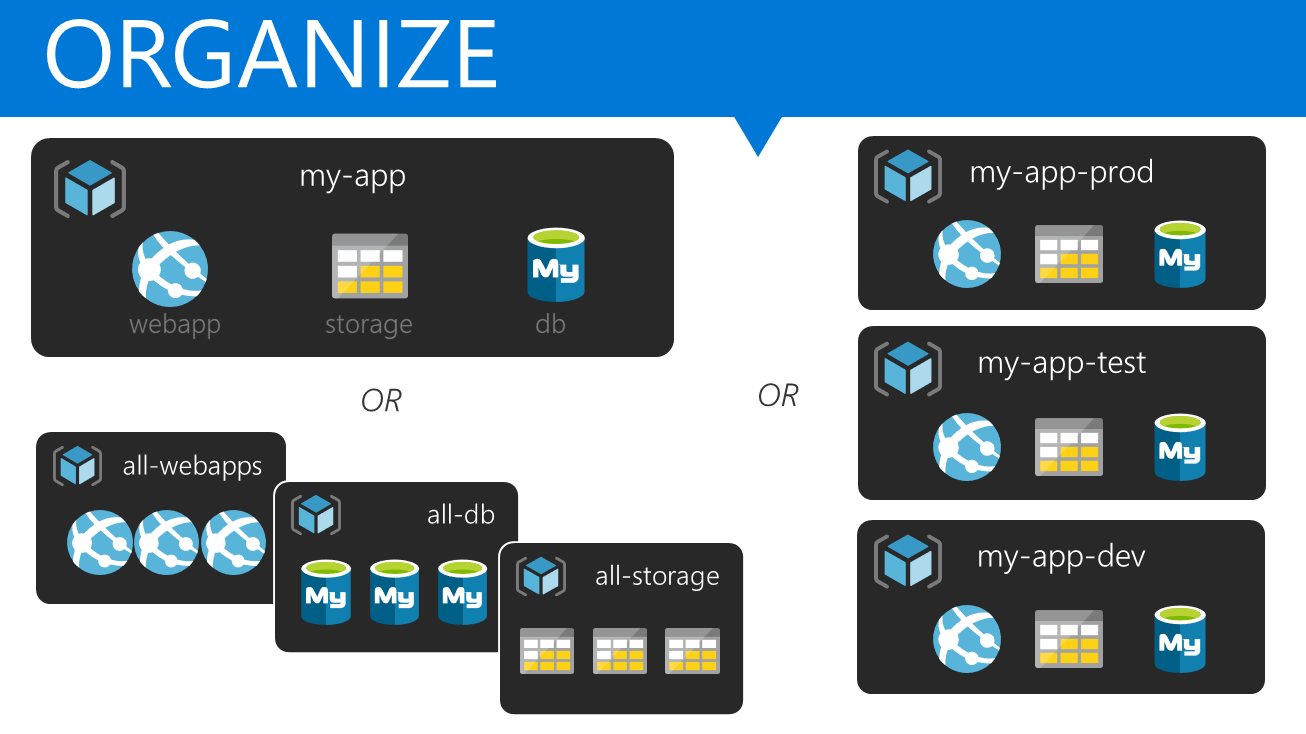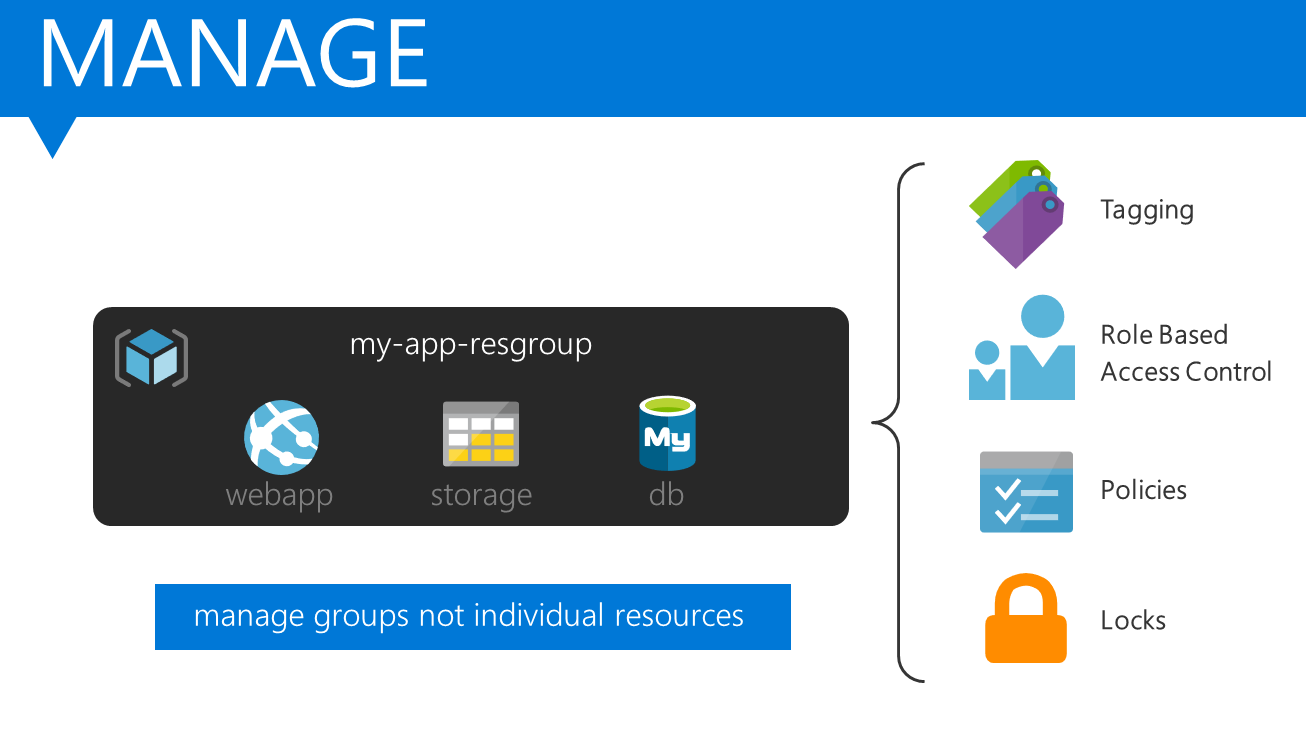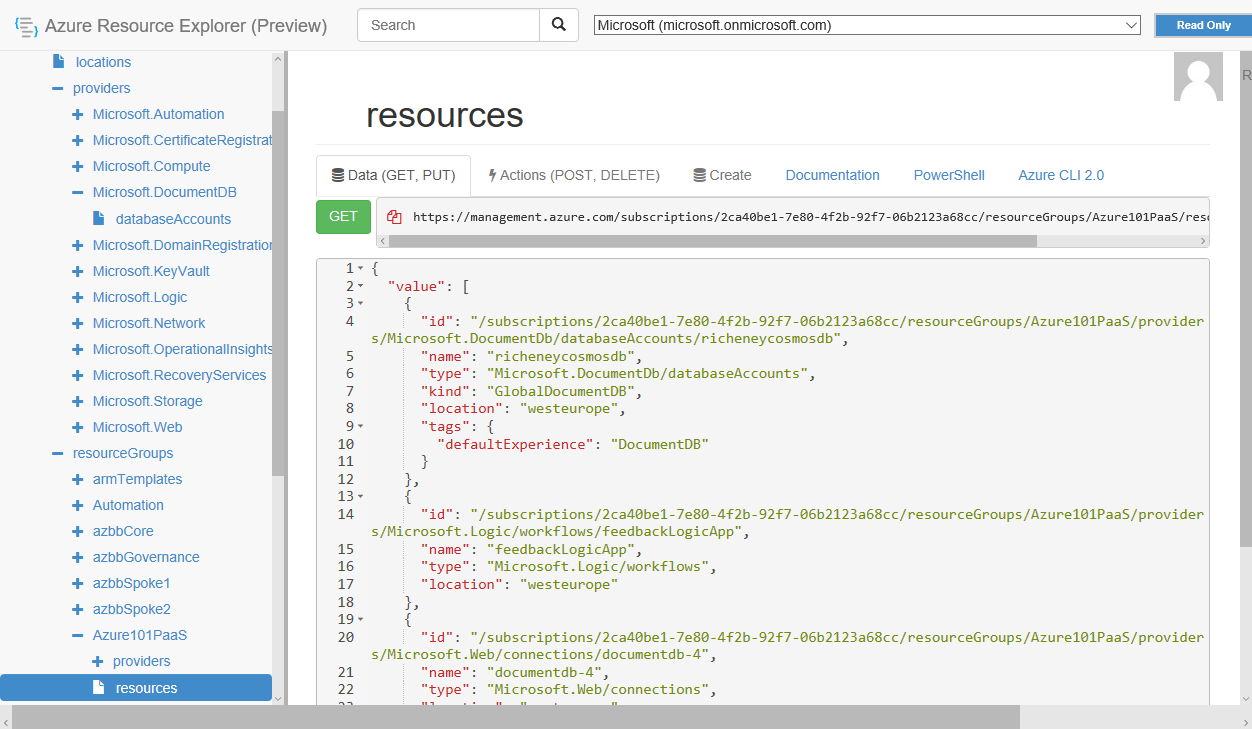Background
Azure Resource Manager, or ARM, is the dominant deployment type for Azure, spanning the public clouds, government clouds and Azure Stack private cloud deployments. It superseded the Azure Service Manager which is expected to be slowly deprecated over time, and will be ignored in this lab except as a comparison point.
Before the workshop moves on to using templates to configure Infrastructure as Code through Azure Resource Manager, it is worth revisiting some of the theory behind ARM, resource providers and resource groups as it will give the template sections some real context.
What is ARM?
Azure Resource Manager sits at the heart of Azure as the control plane for managing the lifecycle of every resource in the platform. Azure Resource Manager consists of a common API surface, consistent tooling and templating mechanisms
The Azure Resource Manager (ARM) layer sits between
- the user interfaces, i.e.
- Azure Portal
- CLIs (PowerShell, CLI 2.0)
- SDKs (Ruby, Python, node.js, .NET, etc.)
- REST API
- and the resource providers
- Microsoft.Compute
- Microsoft.Network
- Microsoft.Storage
- …
The ARM layer takes requests from users and executes them against the various Resource Providers and therefore works as an extensible abstraction layer.
The resources that are then created, modified, listed and deleted by those Resource Providers are managed in the context of Resource Groups.
Resource Groups
If you have used the ARM portal (http://portal.azure.com), then you will be familiar with deploying various resources into resource groups:
Resource Groups:
- containers for multiple resources
- a resource exists in one (and only one) resource group
- the resources in a group can be from various services
- the resources in a group can span multiple regions
Note that a resource group itself will be located in a region, but this does not limit the regions that can be used by its resource. The resource group’s region determines where the metadata for that group resides.

How the resources are grouped depends on the natural organisation of applications, or on how the various resources will be managed. As a guiding rule it is sensible to group together resources that share the same lifecycle, i.e. they will be instantiated in the same period, and may also be deleted in the future at the same time.
Managing Resource Groups
Resource groups are designed as a natural management point for related resources, based on groupings, linked lifecycle, use case, billing aggregation, role based access control, etc.

Tagging
- Assign metadata to resource
- Multiple tags per group or resource (max 15 name/value pairs)
- Used with billing, reporting and automation
Role Based Access Control (RBAC)
- Control access to resources
- Fine grained roles and operations
- Scoped at subscription, resource group and resource level
- Backed by Azure AD
Policies
- Govern resources using rule based policies
- Apply restrictions on type, region, size, name, etc.
- Apply at subscription or resource group level
- Use Azure Policy to ascertain compliancy against policy for existing resources
Locks
- Protect live resource
- Prevent accidental changes with RBAC
- Lock against deletion or modification
Resource Providers
The resources themselves are provisioned by resource providers. Each resource provider will provide one or more resource types. To see which providers are registered (and unregistered) on your subscription, use the CLI 2.0 command below:
az provider list --output table
Namespace RegistrationState
-------------------------------------- -------------------
Microsoft.Advisor Registered
Microsoft.ApiManagement Registered
Microsoft.Automation Registered
Microsoft.Cache Registered
Microsoft.Cdn Registered
Microsoft.Compute Registered
Microsoft.ContainerRegistry Registered
Microsoft.ContainerService Registered
...
Type az provider show --namespace Microsoft.Network to view the JSON detail of a resource provider. Note
- the ID is specific to your subscription
- each resource type has numerous API versions relecting the innovation within Azure
- will be supported in a number of named locations, or will be specified as a global service
There are over 100 resource providers (from both Microsoft and third parties) and over 700 resource types.
Resource Explorer
You can see the definitions of the resources, resource groups and resource providers in use within your subscription in the resource explorer (http:/resources.azure.com).
Drill into an existing resource group, select a resource within it and examine the id key’s value.

Here is an example:
/subscriptions/2ca76be1-7e80-4f2b-92f7-06b2763a68cc/resourceGroups/networkCore/providers/Microsoft.Network/publicIPAddresses/VpnGateway-pip
This can be broken down into:
| Name | Section | Value |
| Subscription ID | /subscriptions/2ca76be1-7e80-4f2b-92f7-06b2763a68cc | 2ca76be1-7e80-4f2b-92f7-06b2763a68cc |
| Resource Group | resourceGroups/networkCore | networkCore |
| Resource Provider | providers/Microsoft.Network | Microsoft.Network |
| Resource Type | publicIPAddresses | Microsoft.Network/publicIPAddresses |
| Resource Name | VpnGateway-pip | VpnGateway-pip |
Note that the resource provider type can be multi-level for nested resource types.
The type is the resource type in the Resource.Provider/resourceType naming type, e.g. “Microsoft.Logic/workflows”
A resource ID will always be unique.
Recommended reading
For more background information on Azure Resource Manager, start with the following links:

Leave a comment